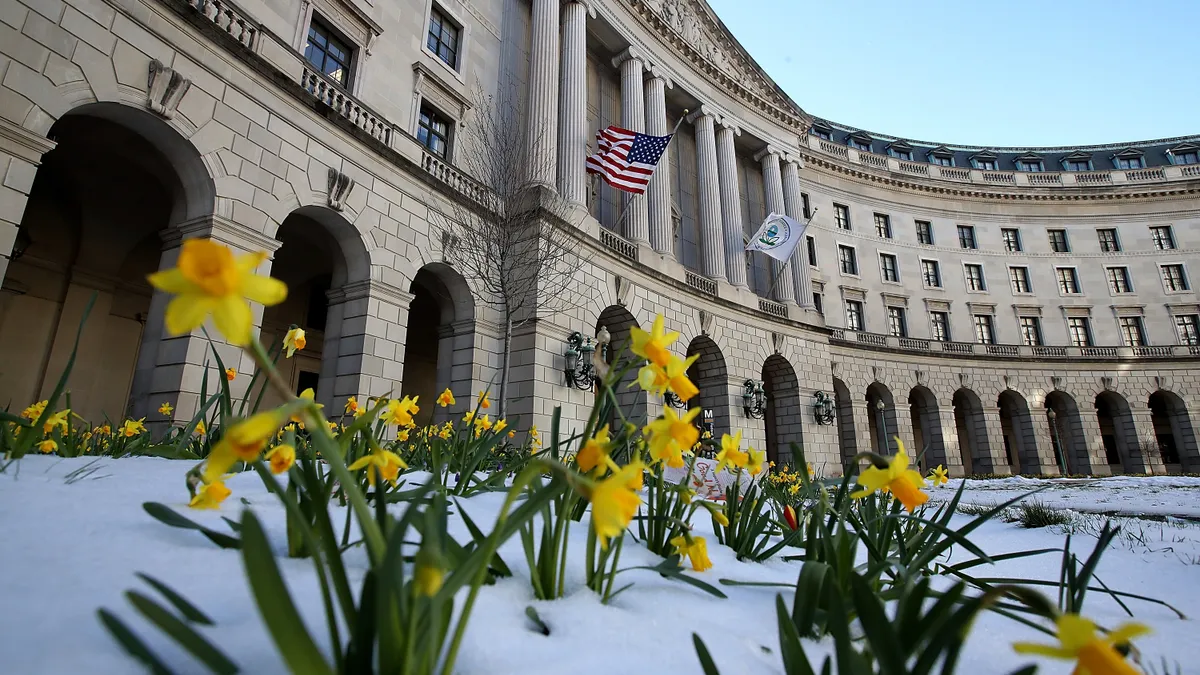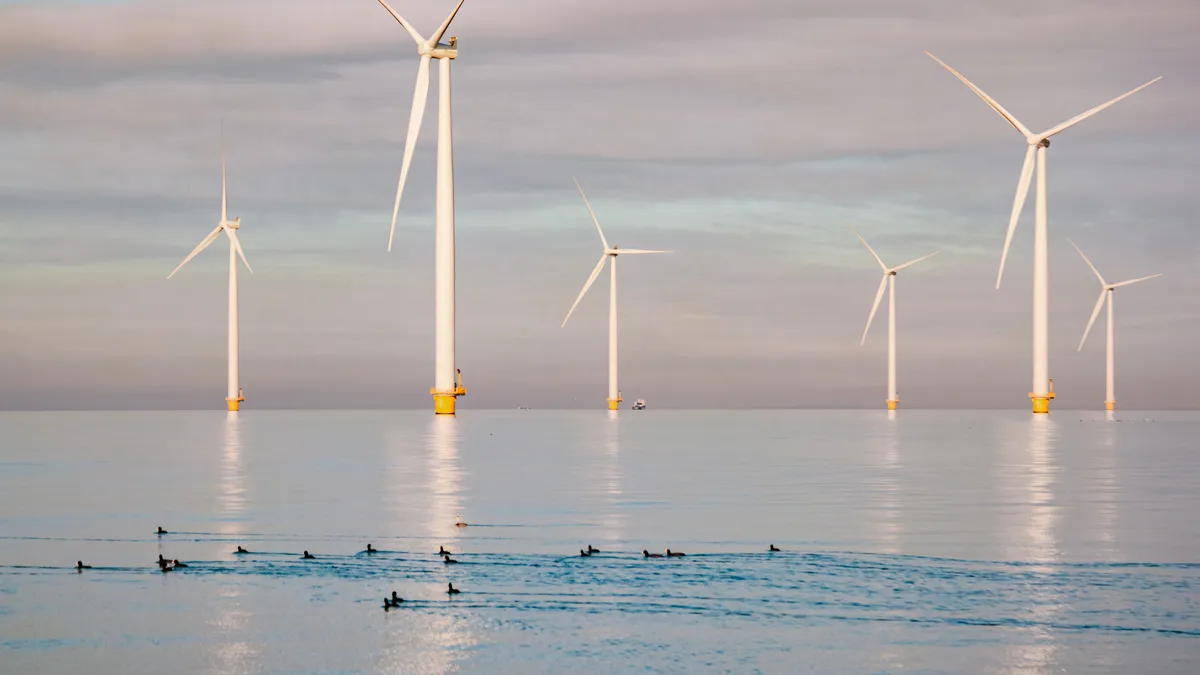After two high-profile rooftop solar regulatory decisions in Hawaii and Nevada, utilities and renewable energy advocates turned their sights on California, the nation's leading solar market.
California has been a leader for years in preparing the grid and utility practices for distributed generation, but at the beginning of 2016, one question preoccupied the sector: On the heels of significant cuts in net metering credits vital to solar's growth, would California regulators preserve retail rate remuneration for rooftop systems?
Solar backers lobbied the California Public Utilities Commission hard at the end of last year, delivering wheelbarrows full of more than 130,000 petitions from state solar customers asking that retail rate remuneration be preserved in the state. In December, regulators issued a proposed decision that would preserve retail rate net metering — along with a few changes to customer fees and rate structures.
The state's investor-owned utilities (IOUs) responded in kind, filing comments with the PUC earlier this month that proposed to gradually reduce the rates paid to rooftop solar systems for the energy their systems send back to the grid. Retail rate net metering, they argued, shifts undue costs for grid upkeep to non-solar owners, since consumers with rooftop systems pay less to the utility.
The months of lobbying culminated in a tense meeting of the CPUC last week, and in the end the solar backers prevailed. In a narrow 3-2 vote, the regulators decided to sustain the net metering credit at the retail rate until 2019.
“The Commission agreed that tying solar credits to retail rates is important because it is simple and proven effective,” said Brad Heavner, policy director of the California Solar Energy Industries Association (CalSEIA), in a statement. “In the debate over net metering that is flaring up in states across the country, California has said yes to continuing net metering and that’s very significant.”
Utility reactions
While regulators in other states have found the utility "cost shift" argument persuasive, the CPUC largely rejected the proposals from California's Big Three IOUs, which argued that solar owners don't pay their fair share for grid upkeep.
The ruling in California’s landmark Net Energy Metering (NEM) 2.0 Docket 14-07-002 “appears to largely maintain the current program, penalizing the 95% of our customers who don’t have solar by adding an extra $300 on their utility bills by 2025,” said Amber Albrect, spokesperson at San Diego Gas and Electric (SDG&E).
“This decision will likely be celebrated by vendors profiting from today’s decision,” she added, “but moving forward it becomes increasingly important for all parties to work together to develop a modern solution to this outdated program.”
“We are extremely disappointed,” Pacific Gas and Electric (PG&E) Spokesperson Ari Vanrenen wrote to Utility Dive in an email. The ruling does not represent “the smart energy reforms that are needed to ensure a sustainable market for solar” but instead “reflect the market dynamics of 25 years ago.”
“Some parties positioned this issue as the utilities versus solar," Pedro Pizarro, president of Southern California Edison, told Utility Dive. "That was never the case. SCE supports solar and has helped more than 158,000 customers go solar."
SCE believes, he added, that the decision "is unwise and unfair.”
But for the solar sector, the decision is a welcome firewall against utility efforts to reduce remuneration rates for solar owners.
“The utilities are upset because they weren’t successful at killing solar like some of their counterparts in other states,” CalSEIA Executive Director Bernadette Del Chiaro observed.
The ruling shows California’s regulators understand NEM “should change only gradually,” she added. “This decision takes significant steps to change net metering over time, but we are confident it will maintain the opportunity to go solar for most types of customers."
What’s in the decision
The 150-plus page "Decision Adopting Successor To Net Energy Metering Tariff" concludes the first stage of California's proceeding on remuneration rates for electricity from distributed solar installations.
The proceeding was initiated by Assembly Bill (AB) 327, passed in 2013, which required the Commission to develop a new “contract or tariff” that would sustain the growth of rooftop solar and be fair to all electricity customers, including those who do not own solar.
AB 327 preserved the previous law’s cap on net metered systems at 5% of aggregate customer peak demand and required that the commission establish the new remuneration credit before the cap was reached, or by July 1, 2017. After the IOUs warned the regulators they were rapidly approaching their caps at the end of the summer, the pressure was on for the commission to find a successor tariff.
Besides keeping the current NEM retail rate tariff in place through 2019, the decision prohibits “demand charges, grid access charges, installed capacity fees, standby fees, or similar fixed charges on NEM residential customers” until the Commission concludes how those rate modifications will impact all residential customers. But it does, however, permit demand charges for non-residential customers.
Additionally, the CPUC decision,
- allows for a minimum bill, a “reasonable” interconnection fee, and specifies certain nonbypassable charges (NBCs) for NEM customers;
- determines that time of use (TOU) rates will be mandatory for new NEM customers;
- preserves retail rate credit for existing NEM customers for 20 years after their interconnection;
- allows solar arrays larger than 1 MW to earn NEM credits if owners cover interconnection costs;
- requires utilities to make solar available to residents of multi-tenant buildings through virtual net metering (VNM) and net metering aggregation (NEMA).
Importantly, the decision asserts that findings in other regulatory proceedings may influence net metering policy down the line.
"[A] better understanding of the impact of customer-sited distributed resources on the electric system will be developed from work currently under way but not yet completed in other Commission proceedings," regulators wrote.
The decision orders that in 2019, when a previous ruling requires that default TOU rates be in place for all residential customers, the commission should also revisit the NEM question “with a view to considering a new tariff that includes an export compensation rate for NEM successor tariff customers that takes into account locational and time-differentiated values.”
In anticipation of the 2019 review, the regulators ordered the IOUs and regulatory staff to begin working on valuation methodologies and developing proposals for unresolved issues such as NEMA, VNM, and alternatives for residential customers in disadvantaged communities.
The debate about the retail rate credit
A group of prominent environmental and solar industry advocates pushed regulators to preserve the retail rate NEM credit. They included the CPUC’s Office of Ratepayer Advocates (ORA), the California Solar Energy Industries Association (CalSEIA), the national Solar Energy Industries Association (SEIA), solar advocacy group VoteSolar, Sierra Club, concerned Federal Agencies, The Alliance for Solar Choice (TASC), and the Natural Resources Defense Council.
PG&E proposed allowing customers “to serve their onsite energy needs directly” and crediting exported solar energy-generated electricity at $0.097/kWh. It also proposed a monthly demand charge of $3/kW and a monthly true-up of credits.
For reference, the average retail electricity rate in California was $0.1736/kWh in November 2015, according to the EIA.
SCE proposed a similar onsite supply provision. Its credit mechanism contained a “renewable energy credit (REC) adder” of $0.01/kWh if the customer’s generation could be applied toward the utility’s state renewables mandate obligation. The credit for exported solar energy-generated electricity would be $0.07/kWh. It proposed a monthly demand charge, termed a grid access charge, of $3/kW.
SDG&E proposed a wholesale rate credit for exported solar energy-generated electricity of $0.04/kWh, a system access fee of $21/month and a grid use charge of $9/kW/month.
Perhaps the most innovative input came from The Utility Reform Network (TURN), which is an independent advocate for customers. It proposed a value of distributed energy (VODE) tariff. It is essentially a “buy-all, sell-all” arrangement in which “customers purchase energy from the utility to meet all of their energy needs and receive bill credits based on the gross electricity production of their onsite system.”
It represents innovation but, according to the commission’s decision, would require valuation tools that do not yet exist. Because TURN itself acknowledged the concept “will not provide sufficient incentive for the continued growth [of solar],” the decision postpones dealing with VODE until the 2019 proceeding.
The IOU revisions to the retail rate credit were rejected for a number of reasons, regulators wrote, but one “overarching issue” was that they failed to make clear the "appropriate cost causation.”
A Public Tool was developed by the commission’s staff for the proceeding to provide “a common framework for parties to use to test and evaluate options.”
SDG&E’s cost shift, Albrecht explained to Utility Dive, “is calculated as the benefit customers receive from full retail rates adjusted for the generation benefit the NEM customer receives, which approximates avoided generation costs.”
CalSEIA’s conclusion, using a different set of parameters, is the cost shift would alter non-solar owner’s bills less than 1%.
But it is not clear, the commission decided, “the Public Tool’s avoided cost, or indeed any proposed utility avoided cost, captures both costs and potential benefits (e.g., locational benefits of DER) that are important.”
A demand charge “is appealing” because it “can send customers an economic signal to adjust their energy usage,” the decision points out. But “demand charges can be complex and hard for residential customers to understand. Since the vast majority of NEM customers are residential customers, it is reasonable to consider the NEM successor tariff in light of the needs of residential customers. From that perspective, the NEM successor tariff should not incorporate a demand charge…[or] other fixed charges…”
Retail rate NEM credits have allowed over 400,000 customers access to on-site renewable generation. Despite the proceeding’s AB 327-ordered focus on “what is now known about the economic values and costs,” the commission decided, only further analysis will provide adequate value and cost data.
“We therefore choose to continue the basic NEM structure, while aligning the responsibilities of NEM customers more closely with those of other customers in their customer class. This approach will result in rates for customer-generators that are just and reasonable.”
Other debates
Nonbypassable charges (NBCs): Charges that “support important programs that are used by and benefit all ratepayers” will be included in the new tariff, the commission decided. “Nonbypassable charges on each kWh of electricity they consume from the grid in each metered interval will recover costs that all customers pay in a fairer and more transparent way than under the current NEM tariff.”
The IOUs urged the commission to include charges for transmission system infrastructure along with the “Public Purpose Program Charge; Nuclear Decommissioning Charge; Competition Transition Charge; and Department of Water Resources bond charges.”
Most stakeholders accepted the last four. The IOUs argued transmission charges should be included because solar users rely on system infrastructure when they are not using self-generated electricity. Solar advocates argued owners of customer-sited generation should be rewarded for reducing the need for transmission infrastructure. The commission accepted the solar advocates' argument.
By excluding the transmission charge, the NBCs result in an NEM credit reduction of $0.02/kWh to $0.023/kWh instead of a reduction of $0.042/kWh to $0.05/kWh, according to CalSEIA Policy Director Brad Policy Director Brad Heavner. Instead of adding a $9/month to $18/month charge to solar owners' bills that would have “a huge impact on the solar market," he said, the commission chose a $5/month to $9/month charge.
Time of use (TOU) rates: In last July’s landmark rate reform order, the commission stressed the urgency of moving to default TOU rates by 2018 as a way of managing customer behavior through price signals instead of demand charges.
In this decision, the commission doubled down on its emphasis by ordering that TOU rates be mandatory for solar owners.
“Because of the importance of TOU rates to the Commission’s overall approach to residential rate reform and the incentives that TOU rates can provide for NEM successor tariff customers, it is important that use of a TOU rate,” the commission wrote, “be required of all customers who would like to use the NEM successor tariff.”
The ruling also provides guidance to the utilities on how to structure the TOU rates.
In order to maximize the value of the TOU rates in improving customers' responsiveness to demands on the grid, "the incentives for NEM successor tariff customers should be aligned with grid conditions,” it prescribed. Mandated TOU rates “will accomplish this alignment efficiently and in a way that is easy for the customer to understand."
Moving solar customers onto mandatory time-of-use rates by 2019 "is going to be difficult because we don’t yet know what those rates will be,” observed SEIA VP of State Affairs Sean Gallagher. “But, we are committed to meeting this challenge and working with the state to achieve its climate and grid modernization goals.”
True up: The IOUs proposed zeroing out unused NEM credits monthly. The commission decided truing the credits up annually “is particularly important for customers that have large seasonal variations in their electricity usage, such as agricultural operations and schools.”
It would “cause significant losses for those customers…[and] customers without such sharp variations in their usage would stand to lose value under a monthly true-up, since some seasonal variation is present in all customers' usage patterns,” the commission added. “No compelling reason has been presented by the IOUs to change this intuitively sensible feature.”
Grandfathering: Allowing existing NEM customers to continue for 20 years from their interconnection allows “a reasonable period over which a customer taking service under the existing NEM tariff should be eligible to continue taking service under that tariff.”
Instructions to Energy Staff: The decision stressed that, for 2019, Staff needs to do further analysis on alternative compensation structures, including “an export compensation rate that takes into account locational and time-differentiated values of customer-sited DG.” The commission wants further information on “complementary policies to increase the value of customer-sited renewable DG.”
The commissioners' votes
“All of us are pro-solar but the amount being paid for solar is just too high,” Commissioner Michael Florio said in voting against the order.
”There is a lot to like in this ruling because it preserves customer choice, which is paramount,” he said. He also approved of the mandatory TOU rates and the requirement to move toward time and location specific values.
“But it still represents an opportunity lost,” he said. The recent long-term extension of the federal 30% investment tax credit for solar created the opportunity to move solar compensation in California to a more sustainable level. “A system which benefits the few can only be sustained so long.”
Compensation needs to address "the value of what is delivered," he said. “Despite my sincere support for rooftop solar, I must vote no.”
This decision doesn’t answer all the questions, but it does move in the right direction at this time of transition, Commissioner Carla Peterman said in voting for the ruling.
Commission Chair Michael Picker and Commissioner Liane Randolph joined Commissioner Peterman in voting Yes. Commissioner Catherine Sandoval joined Commissioner Florio in voting No.
“It is clear the commission is not comfortable with the variety of value and cost estimates for this resource,” Peterman said. The commission expects progress on that in the next two years, she added.
Things in the decision that increase the cost shift are of concern and “moving to a different model in 2019 may be necessary to address it,” she warned. “We want to get to the right number, we are troubled by the wide range of values, and we are saying in this decision that we need to get to a number by 2019.”





















